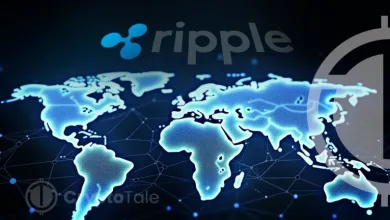Review on USDC: A Stablecoin Bridging Crypto and US Dollar

There are various types of cryptocurrencies, such as meme coins and privacy coins, but one category that stands out for stability is the stablecoin. In a market where volatility is the norm, stablecoins like USDC offer much-needed consistency. USDC is a blend of financial stability and blockchain technology, mirroring the value of US dollars. As digital assets continue to grow, USDC has become a major player in the cryptocurrency world. In this article, we will give you a clear overview of USDC.
What is USDC?
USDC, also known as USD Coin, is a type of cryptocurrency known as a stablecoin. Stablecoins are pegged to the currencies of countries at a 1:1 ratio, meaning 1 USDC is equivalent to 1 US dollar. It’s important to note that USDC is an ERC-20 token, which means it was built on the Ethereum blockchain. However, it’s not limited to just Ethereum-USDC; it is also compatible with Algorand, Solana, Noble, Polkadot, Stellar, and other blockchains.
Unlike other types of cryptocurrencies, such as memecoins or privacy coins, whose value often fluctuates depending on market conditions, stablecoins like USDC have a fixed value. This means that the value of a single USDC will always be equal to 1 US dollar, making it unique in a world filled with constant volatility.
History of USDC
The stablecoin USDC was announced in May 2018 and launched in September of the same year. It was developed by the Centre Consortium, a joint venture between payment provider Circle and one of the largest crypto exchanges in the world, Coinbase. The Centre’s main goal was to create a coin that combined the stability of the U.S. dollar with the advantages of blockchain technology.
The coin was first listed on Coinbase, and by November, on Binance. Later, other exchanges adapted the stablecoin. USDC aimed to improve stablecoins’ transparency and licensing standards so that they could be used for trading, payments, and other purposes. The increased adoption due to the coin’s popularization in 2019 and the DeFi boom in 2020 led to increased utility and demand for the coin within the crypto ecosystem. Furthermore, with the increase in users over the years, USDC has become one of the top cryptocurrencies based on market cap.
How Does USDC Work?
The first thing to understand about how USDC works is its minting process, which differs from the Proof of Work (PoW) or Proof of Stake (PoS) methods used by cryptocurrencies like Ethereum and Bitcoin. USDC coins are minted or issued based on the amount of U.S. dollars deposited. When businesses or traders deposit U.S. dollars into their Circle account, an equivalent amount of USDC tokens is created on the blockchain and sent to their cryptocurrency wallet. For instance, if a user deposits $2,000 into their Circle account, 2,000 USDC will be created and sent to the user’s address.
Conversely, if a user wants to redeem USDC for dollars, they need to send the tokens back to the issuer. The issuer then burns the tokens and transfers an equivalent amount of U.S. dollars to the user’s bank account.
Stablecoins like USDC do not use consensus mechanisms like PoW or PoS; instead, they rely on the underlying blockchain to perform their functions. The creation, transfer, and redemption of USDC are governed by smart contracts. Additionally, each USDC token is backed by an equivalent amount of U.S. dollars or other assets held in reserve by Circle. To maintain trust, Circle regularly publishes proof from third-party accounting firms to verify that for every USDC coin in circulation, there is an adequate amount of U.S. dollars to cover them.
Use Cases of USDC
1. Hedge Against Volatility: Because of the nature of stablecoins like USDC, it is often used as a hedge against the volatile nature of cryptocurrencies. During periods of high volatility, investors buy USDC to safeguard their portfolio value.
2. Global Payments: With low fees and fast settlement times, USDC is often used for global transactions. Furthermore, it is also popular for cross-border payments due to its lower costs compared to traditional remittance services.
3. DeFi: USDC is quite popular on DeFi platforms because traders can earn interest by lending or borrowing the coin. Additionally, users can earn rewards by staking USDC in liquidity pools on decentralized exchanges.
Advantages of USDC
- Frequent audits and transparency reports prove that Circle can fully back USDC with US dollars.
- USDC is one of the widely used stablecoins, offering high liquidity. This allows traders to easily buy, sell, and trade cryptocurrencies.
- The stablecoin is compatible with multiple blockchains, enhancing its utility and interoperability across the crypto ecosystem.
Disadvantages of USDC
- As USDC is issued and managed by Circle, it raises centralization concerns. Circle has total control over the issuance of coins and can easily freeze or block addresses.
- Since USDC is pegged to the value of US dollars, any major movement in the dollar, like inflation, could affect the value of USDC.
Conclusion
In the volatile cryptocurrency market, USDC stands out as a reliable stablecoin, offering the stability of the US dollars. Its compatibility with various blockchains, high liquidity, and broad adoption makes it a great tool for global payments, DeFi applications, and hedging against market volatility. However, since USDC is pegged to the US dollars, it is subject to various economic conditions and monetary policies affecting the dollar’s value. When considering the overall cryptocurrency market, USDC plays a vital role in maintaining the stability of the ecosystem.




